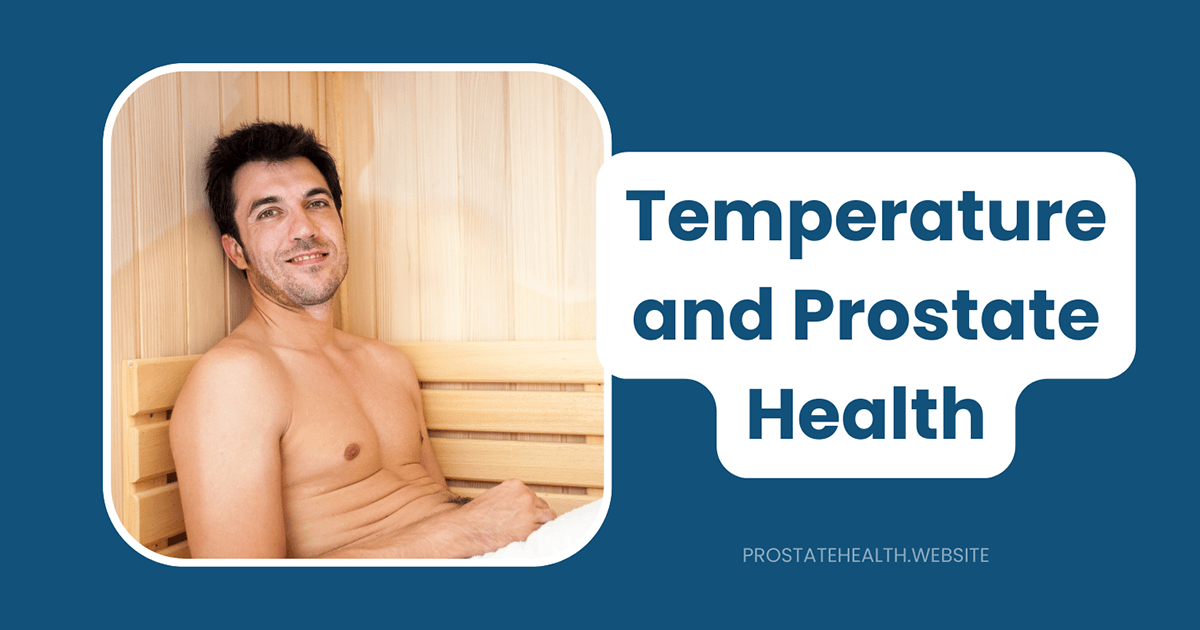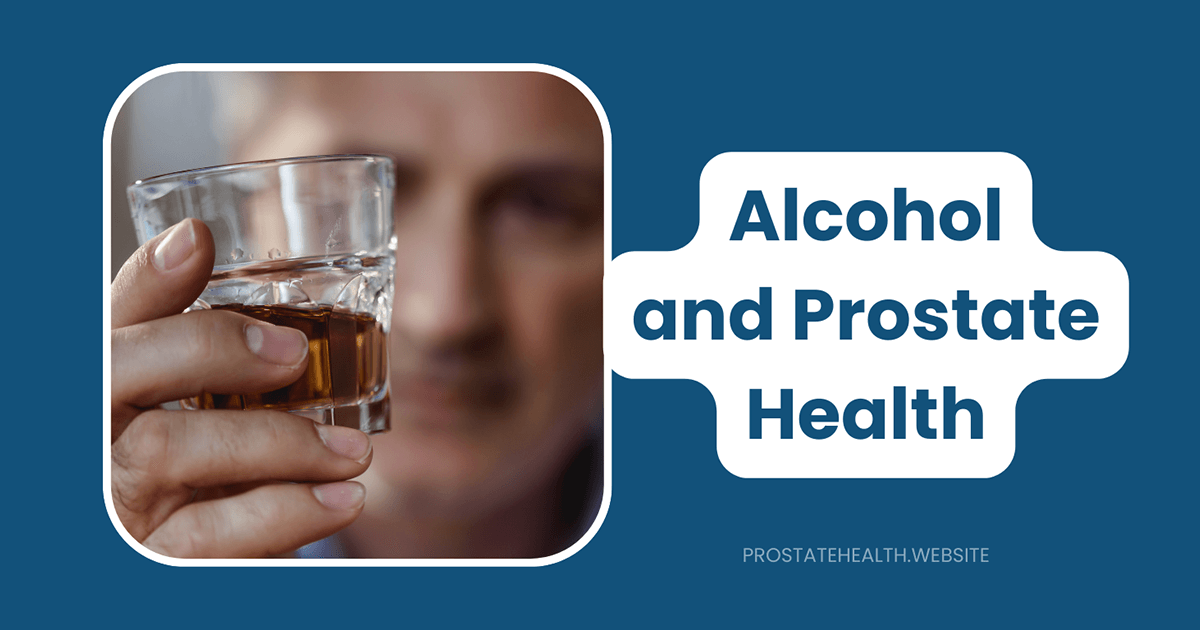Temperature and Prostate Health: Are Hot Baths Helpful or Harmful?

When Michael, a 58-year-old with chronic prostatitis, mentioned to his urologist that hot baths seemed to ease his symptoms, he was surprised by the response: “That’s actually one of the oldest and most effective home remedies for prostate discomfort.”
Indeed, the relationship between temperature and prostate health has been recognized for centuries. From traditional hot springs therapy in Japan to modern hydrotherapy techniques, heat has long been used to address various prostate conditions. But is this approach scientifically sound? Are there risks involved? And how exactly does temperature affect this important gland?
This comprehensive guide explores the complex relationship between temperature—particularly hot baths—and prostate health, examining both the potential benefits and risks to help you make informed decisions about this accessible home remedy.
Understanding the Prostate and Temperature Sensitivity
Before diving into the effects of temperature, it’s helpful to understand why the prostate might be responsive to heat therapy in the first place.
The Prostate’s Location and Function
The prostate is a walnut-sized gland located just below the bladder, surrounding the urethra. It produces fluid that nourishes and protects sperm, forming a significant portion of semen. Due to its position deep within the pelvic region, the prostate is affected by:
- Blood flow to the pelvic area
- Surrounding muscle tension
- Local inflammation
- Nerve sensitivity in the region
Temperature Sensitivity
The prostate appears to be responsive to temperature changes for several reasons:
- Rich blood supply: The prostate has abundant blood vessels that can dilate or constrict in response to temperature, affecting blood flow and inflammation.
- Muscle relaxation: Heat can relax the smooth muscles in and around the prostate and pelvic floor, potentially easing tension and discomfort.
- Inflammatory response: Temperature changes can influence inflammatory processes, with heat potentially reducing certain types of inflammation.
- Nerve sensitivity: The pelvic region contains numerous nerve endings that respond to temperature changes, potentially altering pain perception.
Dr. Sarah Johnson, urologist at Memorial Urology Center, explains: “The prostate exists in a temperature-sensitive environment. Heat application can increase blood flow to the area, which may help reduce inflammation and muscle tension—two common contributors to prostate discomfort.”
The Benefits of Hot Baths for Prostate Health
Research and clinical experience suggest that hot baths may offer several benefits for prostate health, particularly for certain conditions:
1. Benefits for Prostatitis
Prostatitis—inflammation of the prostate gland—affects approximately 10-15% of the U.S. male population and accounts for about two million healthcare visits annually. For this condition, hot baths may help:
- Reduce pelvic muscle tension: Many cases of chronic prostatitis/chronic pelvic pain syndrome (CP/CPPS) involve tension in the pelvic floor muscles. Heat can help relax these muscles.
- Improve blood circulation: Enhanced blood flow may help reduce inflammation and promote healing.
- Alleviate pain: Heat therapy can stimulate sensory receptors in the skin, potentially decreasing the transmission of pain signals to the brain.
- Reduce stress: The relaxing effect of a hot bath can lower stress levels, which may indirectly benefit prostate health by reducing tension in the pelvic region.
A study published in the Journal of Urology found that regular warm sitz baths (shallow baths where just the hips and buttocks are immersed) provided significant symptom relief for men with chronic prostatitis, particularly when combined with other treatments.
2. Benefits for BPH (Benign Prostatic Hyperplasia)
For men with an enlarged prostate, hot baths may offer temporary relief from certain symptoms:
- Reduced urethral constriction: Heat can relax the smooth muscles around the urethra, potentially easing urinary flow difficulties.
- Decreased inflammation: Some BPH symptoms are exacerbated by inflammation, which heat may help reduce.
- Improved comfort: General relaxation of the pelvic region may reduce discomfort associated with BPH.
While hot baths won’t reduce the size of an enlarged prostate, they may provide symptomatic relief for some men.
3. Post-Surgical Benefits
Research has also examined the benefits of warm sitz baths following prostate procedures:
- A study published in the Korean Journal of Urology analyzed 1,783 patients who underwent transurethral resection of the prostate (TURP). Those who took regular warm sitz baths (at 40-45°C for 10 minutes) after catheter removal had a significantly lower incidence of urethral stricture compared to those who didn’t (0.28% vs. 0.92%).
- The same study found that patients who didn’t take warm sitz baths had a 1.13-fold increased risk of rehospitalization within one month after surgery.
Dr. Michael Chen, urologic surgeon, notes: “I routinely recommend warm sitz baths to my patients after prostate procedures. The evidence suggests they may help reduce complications and improve comfort during recovery.”
Potential Risks and Concerns
Despite the potential benefits, hot baths aren’t without risks, particularly when used improperly:
1. Excessive Heat
Water that’s too hot can cause several problems:
- Burns and tissue damage: Water above 104°F (40°C) increases the risk of burns, particularly with prolonged exposure.
- Cardiovascular stress: Very hot water can place strain on the heart by causing blood vessels to dilate rapidly, potentially leading to drops in blood pressure.
- Dehydration: Hot baths accelerate fluid loss through sweating, which can lead to dehydration if fluids aren’t replenished.
2. Contraindications for Certain Conditions
Hot baths may not be appropriate for everyone, particularly:
- Acute bacterial prostatitis: During active infection, heat could potentially spread bacteria. Cold therapy might be more appropriate initially.
- Recent prostate biopsies or certain surgeries: Heat may increase bleeding risk after some procedures.
- Prostate cancer: While there’s no evidence that hot baths promote cancer growth, men with prostate cancer should consult their healthcare provider before using heat therapy.
- Cardiovascular conditions: Those with unstable heart conditions, uncontrolled high blood pressure, or a history of fainting should use caution with hot baths.
3. The Testicular Temperature Concern
One specific concern relates to testicular temperature:
- Sperm production requires temperatures lower than core body temperature, which is why the testes are located outside the body.
- Prolonged exposure to high temperatures through very hot baths, saunas, or hot tubs has been associated with temporary decreases in sperm production and quality.
- For men concerned about fertility, moderation in bath temperature and duration is advisable.
Dr. Jennifer Williams, reproductive specialist, advises: “While occasional hot baths are unlikely to significantly impact fertility, men actively trying to conceive might want to limit very hot baths or ensure the testicles remain above water level.”
Best Practices: Using Hot Baths Safely for Prostate Health
To maximize benefits while minimizing risks, consider these guidelines:
Temperature Recommendations
- Optimal temperature range: 98-104°F (37-40°C). This provides therapeutic warmth without excessive heat.
- Testing the water: Use a bath thermometer for accuracy. Without one, the water should feel warm but not uncomfortably hot.
- Gradual entry: Enter the bath slowly to allow your body to adjust to the temperature.
Duration and Frequency
- Recommended duration: 10-20 minutes per session is typically sufficient to achieve benefits without risks.
- Frequency: For chronic conditions like CP/CPPS, daily baths may be beneficial. For general prostate health, 2-3 times weekly is often recommended.
- Timing: Evening baths may be particularly beneficial for men with nocturia (nighttime urination), as the relaxing effects may improve sleep quality.
Enhancing the Experience
- Sitz baths vs. full baths: Both can be effective. Sitz baths target the pelvic region specifically, while full baths provide whole-body relaxation that may indirectly benefit the prostate through stress reduction.
- Additives: While Epsom salts (magnesium sulfate) are popular, there’s limited evidence they provide additional prostate benefits beyond the effects of warm water alone.
- Hydration: Drink water before and after hot baths to prevent dehydration.
- Post-bath care: Gently pat the genital area dry rather than rubbing, which can cause irritation.
When to Avoid Hot Baths
Temporarily avoid hot baths if you have:
- Fever
- Active urinary tract infection
- Recent prostate surgery (without your surgeon’s approval)
- Open wounds in the genital or rectal area
- Acute bacterial prostatitis
Beyond Hot Baths: Other Temperature Therapies for Prostate Health
Hot baths aren’t the only way to apply therapeutic heat to the prostate region:
1. Heating Pads and Hot Water Bottles
These provide localized heat and can be particularly useful for:
- Targeting specific areas of discomfort
- Situations where a bath isn’t practical
- Applying heat for longer periods at a controlled temperature
How to use: Apply to the lower abdomen or perineum (the area between the scrotum and rectum) for 15-20 minutes at a time.
2. Warm Compresses
Warm, moist compresses can provide gentle heat therapy:
- May be less intense than heating pads
- The moisture can enhance heat transfer
- Can be easily applied to the perineum
How to use: Soak a clean washcloth in warm water, wring out excess, and apply to the perineal area for 10-15 minutes.
3. Contrast Therapy
Some men find alternating between warm and cool temperatures beneficial:
- May enhance circulation through vasodilation and vasoconstriction
- Potentially reduces inflammation more effectively than heat alone
- Can be invigorating and provide pain relief
How to use: Apply warm therapy for 3-5 minutes, followed by cool (not cold) therapy for 1-2 minutes. Repeat several cycles, always ending with warm.
4. Professional Thermotherapy
For BPH, several medical procedures use controlled heat:
- Transurethral Microwave Thermotherapy (TUMT): Uses microwave energy to heat and destroy excess prostate tissue
- Water Vapor Therapy (Rezūm): Uses steam to reduce prostate size
- Transurethral Needle Ablation (TUNA): Uses low-level radiofrequency energy to heat and destroy excess tissue
These medical procedures are different from home heat therapy and should only be performed by qualified healthcare providers.
Real-World Experiences: Men’s Stories with Heat Therapy
Many men have found relief through heat therapy for various prostate conditions:
Robert, 62, chronic prostatitis patient: “I’ve tried many treatments over the years, but a 15-minute hot bath before bed has been one of the most consistently effective for reducing my pelvic pain. It’s not a cure, but it makes the condition much more manageable.”
James, 70, post-TURP patient: “My urologist recommended sitz baths after my prostate surgery. I was skeptical, but they significantly reduced my discomfort during recovery. I continued them for about three weeks and had a very smooth recovery.”
David, 55, BPH patient: “On days when my urinary symptoms are particularly bothersome, a hot bath often provides temporary relief. I find it helps me empty my bladder more completely and reduces the urgency sensation.”
Michael, 58, with prostatitis: “I combine hot baths with stretching exercises for my pelvic floor. The heat seems to make the stretches more effective, and together they’ve reduced my symptoms by about 70%.”
While these personal experiences are encouraging, it’s important to remember that responses to heat therapy vary. What works well for one person may not be as effective for another.
The Cold Therapy Alternative
While this article focuses primarily on heat therapy, it’s worth noting that cold therapy has its place in prostate health as well:
When Cold May Be Better Than Heat
- Acute inflammation: In cases of acute prostatitis or immediately after injury, cold therapy may be more appropriate initially to reduce inflammation.
- Post-exercise recovery: After activities that might trigger prostate discomfort, cold therapy can help reduce inflammation.
- Alternating with heat: As mentioned in contrast therapy, alternating between heat and cold may provide enhanced benefits for some men.
How to apply cold therapy: Use an ice pack wrapped in a thin towel (never apply ice directly to skin) to the perineum or lower abdomen for 10-15 minutes at a time.
Integrating Temperature Therapy into a Comprehensive Prostate Health Plan
For optimal results, temperature therapy should be part of a broader approach to prostate health:
Complementary Approaches
- Pelvic floor exercises: Can help relax or strengthen pelvic muscles, depending on the condition
- Anti-inflammatory diet: May help reduce prostate inflammation
- Regular physical activity: Improves overall circulation and may benefit prostate health
- Stress management: Reduces tension that can exacerbate prostate symptoms
- Adequate hydration: Supports overall prostate and urinary health
- Regular medical check-ups: Ensures appropriate monitoring and treatment
Working with Healthcare Providers
Always discuss temperature therapy with your healthcare provider, particularly if you have:
- A diagnosed prostate condition
- Other health concerns
- Questions about the appropriateness of heat therapy for your specific situation
Dr. Robert Thompson, integrative urologist, advises: “I encourage patients to view heat therapy as a complementary approach rather than a standalone treatment. When combined with appropriate medical care and lifestyle modifications, it can be a valuable part of managing prostate conditions.”
Conclusion: Finding the Right Balance
The evidence suggests that for many men, hot baths and other heat therapies can be beneficial for prostate health, particularly for managing symptoms of conditions like chronic prostatitis and BPH, as well as for post-surgical recovery.
However, the key is moderation and appropriate application:
- Maintain safe temperatures (98-104°F/37-40°C)
- Limit sessions to 10-20 minutes
- Stay hydrated
- Be aware of contraindications
- Use heat therapy as part of a comprehensive approach to prostate health
As with many aspects of health, individual responses vary. What works well for one person may not be as effective for another. Pay attention to how your body responds and adjust accordingly.
Remember Michael from our introduction? He found that a 15-minute hot bath before bed three times weekly significantly reduced his prostatitis symptoms. “It’s not a miracle cure,” he says, “but it’s a simple, accessible tool that has made a real difference in my quality of life.”
By understanding both the benefits and limitations of temperature therapy, you can make informed decisions about incorporating this approach into your prostate health regimen.
Have you tried hot baths or other temperature therapies for prostate health? What has your experience been? Share your thoughts in the comments below.






